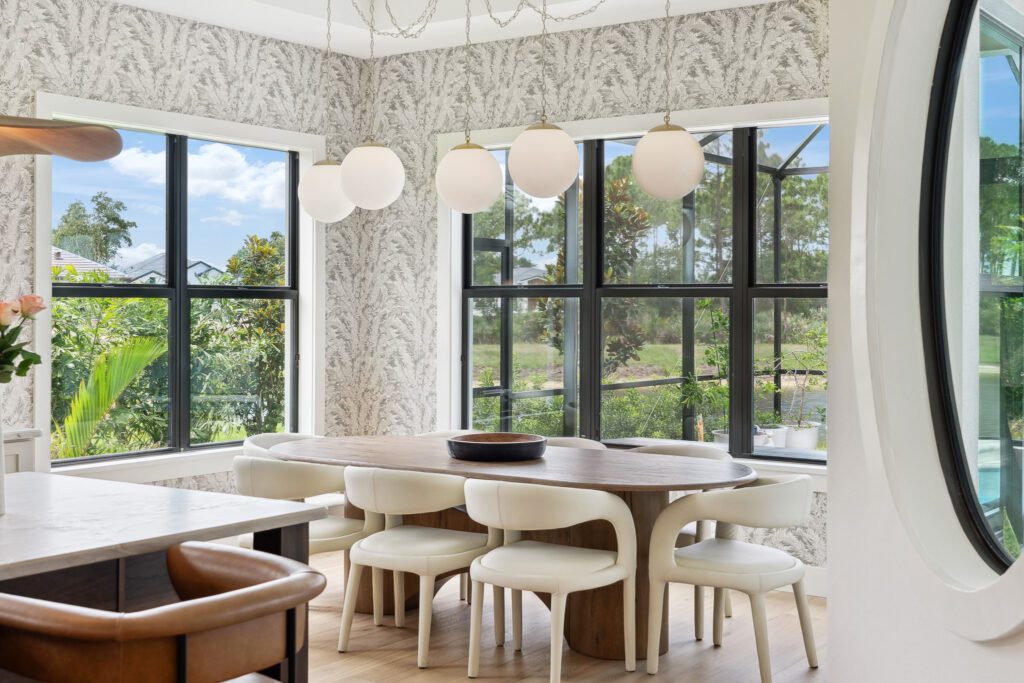Aripeka Homes in Viera: Exploring the Lush Flora of This Beautiful Community
The Natural Beauty of Aripeka
Benefits of Native Plants

Types of Trees in Aripeka Homes
Live Oak (Quercus virginiana)
The Live Oak is one of the most iconic trees in the Southeastern United States. Known for its sprawling branches and evergreen foliage, this tree provides ample shade and adds a sense of grandeur to any landscape.
Benefits
- Shade: Live Oaks provide significant shade, helping to cool the surrounding area and reduce energy costs for nearby homes.
- Wildlife Habitat: These trees offer excellent habitat for birds and other wildlife, supporting the local ecosystem.
- Longevity: Live Oaks are long-lived and can become a lasting feature of the landscape.
Sabal Palm (Sabal palmetto)
The Sabal Palm, also known as the Cabbage Palm, is Florida’s state tree. This hardy palm is well-suited to the region’s climate and adds a tropical touch to the landscape.
Benefits
- Drought Tolerance: Sabal Palms are highly drought-tolerant, making them an excellent choice for sustainable landscaping.
- Wildlife Support: The fruit of the Sabal Palm provides food for birds and other wildlife.
- Aesthetic Appeal: These palms enhance the visual appeal of the landscape with their distinctive, fan-shaped leaves.
Southern Magnolia (Magnolia grandiflora)
The Southern Magnolia is a beloved tree known for its large, fragrant white flowers and glossy green leaves. This tree is a staple of Southern landscapes and adds a touch of elegance to Aripeka Homes.
Benefits
- Fragrance and Beauty: The large, fragrant flowers of the Southern Magnolia are a standout feature, adding beauty and aroma to the landscape.
- Shade and Shelter: The dense foliage provides excellent shade and shelter for wildlife.
- Low Maintenance: Southern Magnolias are relatively low maintenance once established.
Slash Pine (Pinus elliottii)
The Slash Pine is a native pine species that thrives in the sandy soils of Florida. Known for its tall, straight trunk and long needles, this tree is a valuable part of the local ecosystem.
Benefits
- Wildlife Habitat: Slash Pines provide habitat for a variety of wildlife, including birds and small mammals.
- Erosion Control: The root system helps stabilize soil and prevent erosion.
- Timber and Resin: Slash Pines are also valued for their timber and resin production.
Bald Cypress (Taxodium distichum)
The Bald Cypress is a unique tree commonly found in wetland areas. It is known for its distinctive “knees” that protrude from the ground and its ability to thrive in both wet and dry conditions.
Benefits
- Water Management: Bald Cypress trees are excellent for managing water in wetland areas, helping to prevent flooding.
- Wildlife Support: These trees provide habitat and food for a variety of aquatic and terrestrial wildlife.
- Aesthetic Appeal: The unique appearance of Bald Cypress trees adds interest and beauty to the landscape.
Types of Plants in Aripeka Homes
Saw Palmetto (Serenoa repens)
The Saw Palmetto is a low-growing, fan-leaved palm native to Florida. It is commonly found in coastal and sandy areas and is known for its hardiness and resilience.
Benefits
- Drought Tolerance: Saw Palmetto is highly drought-tolerant and requires minimal maintenance.
- Wildlife Support: The berries of the Saw Palmetto are a vital food source for wildlife, including birds and mammals.
- Erosion Control: The extensive root system helps prevent soil erosion.
Coontie (Zamia integrifolia)
Coontie is a native cycad with fern-like leaves that add a tropical touch to the landscape. It is a low-maintenance plant that thrives in various conditions.
Benefits
- Hardiness: Coontie is very hardy and can tolerate a range of conditions, including drought and poor soils.
- Wildlife Habitat: It serves as a host plant for the larvae of the Atala butterfly, making it an important part of the local ecosystem.
- Aesthetic Appeal: Its unique, fern-like appearance adds texture and interest to the landscape.
Firebush (Hamelia patens)
Firebush is a native shrub known for its vibrant red flowers and ability to attract hummingbirds and butterflies. It is a favorite for adding color to the landscape.
Benefits
- Attracts Pollinators: The bright red flowers attract hummingbirds, butterflies, and other pollinators, supporting biodiversity.
- Heat and Drought Tolerant: Firebush is highly tolerant of heat and drought, making it suitable for Florida’s climate.
- Long Blooming Season: It has a long blooming season, providing color and interest for much of the year.
Beautyberry (Callicarpa americana)
The American Beautyberry is a deciduous shrub known for its striking clusters of purple berries. It is a hardy plant that thrives in a variety of conditions.
Benefits
- Wildlife Support: The berries are a valuable food source for birds and other wildlife.
- Low Maintenance: Beautyberry requires minimal maintenance and is highly adaptable.
- Aesthetic Appeal: The vibrant purple berries add a pop of color to the landscape.
Sea Oats (Uniola paniculata)
Sea Oats are a native grass species that thrive in coastal areas. They are known for their tall, graceful plumes and role in stabilizing sand dunes.
Benefits
- Erosion Control: Sea Oats play a crucial role in stabilizing sand dunes and preventing erosion.
- Drought Tolerance: They are highly drought-tolerant and require minimal care.
- Aesthetic Appeal: The tall, swaying plumes add movement and texture to the landscape.
Aripeka Homes In Viera - Preserving Nature
CDS Builders is honored to be commissioned to build the Aripeka Community. Our executive team is made up of second-generation entrepreneurs and builders in Brevard County. More than continuing the Duda family vision, Aripeka serves as the ‘Crown Jewel’ to our own family history and portfolio. We invite you to experience many generations of quality, integrity, and innovation at work. It is our honor to build your legacy in Aripeka! Make sure to follow us on Facebook for updates!







